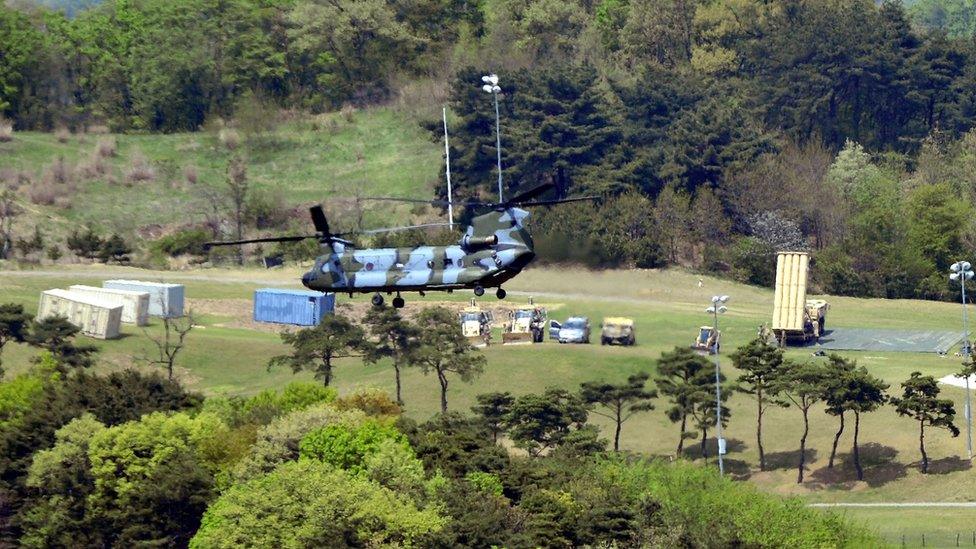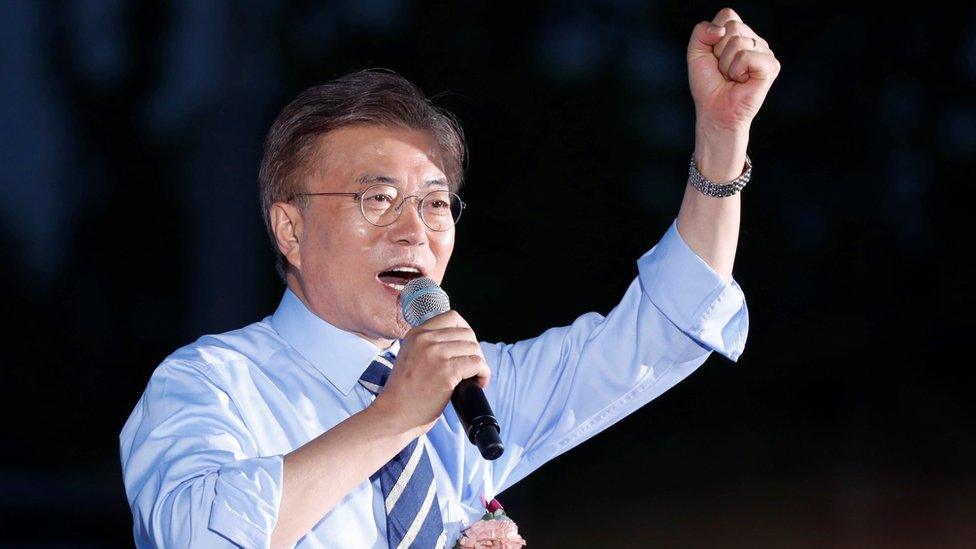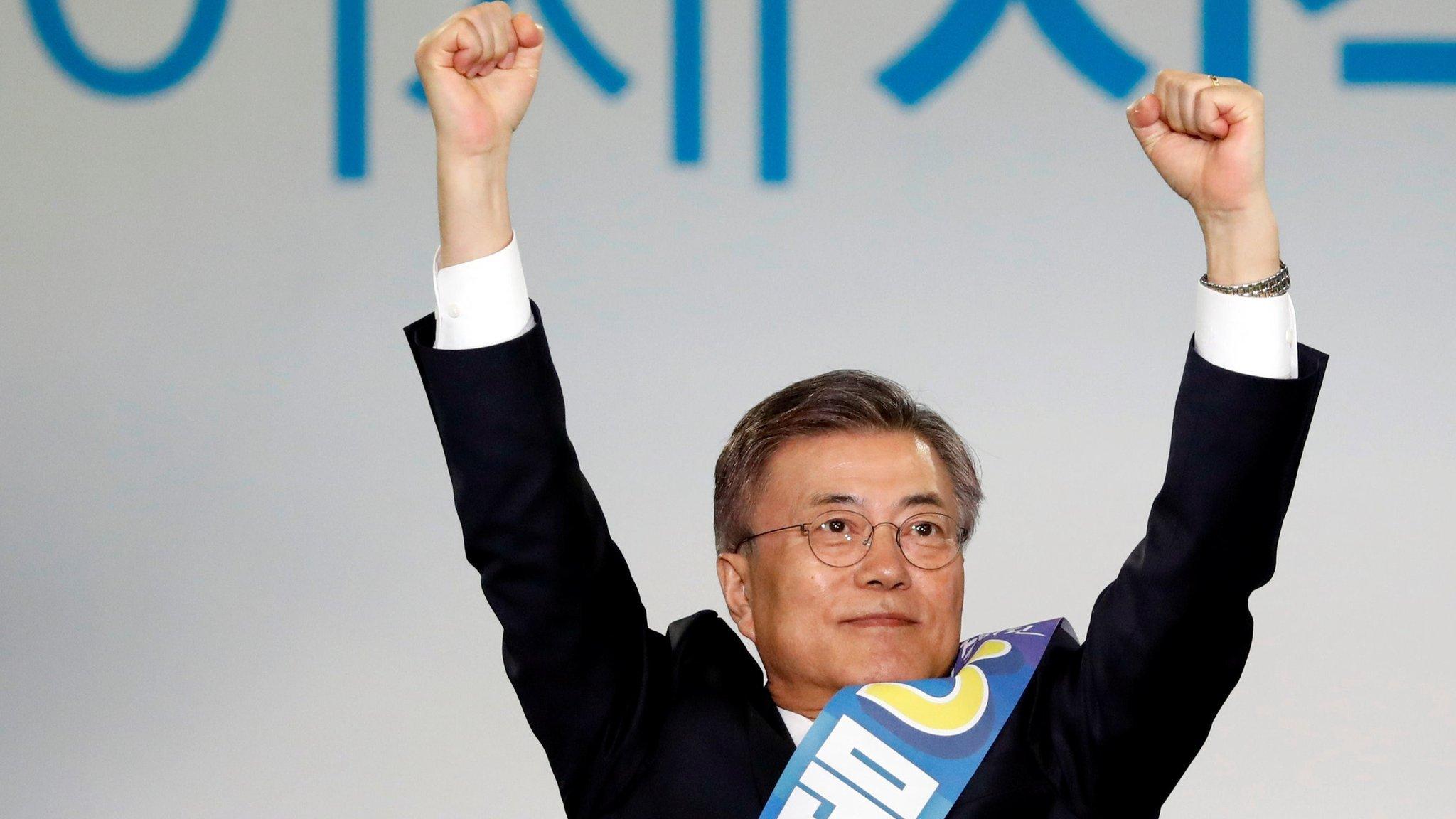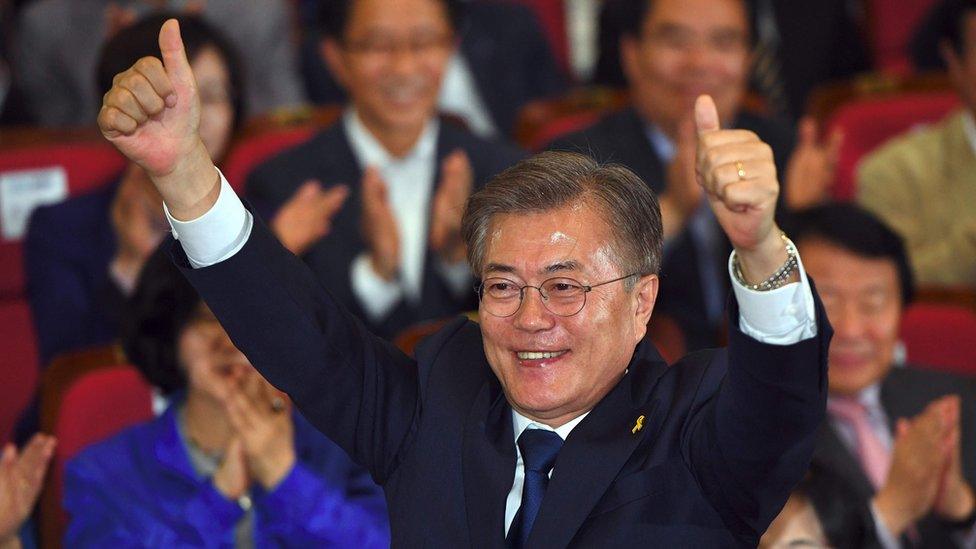China presses South Korea on Thaad missile system
- Published

The US military says the Thaad system became operational in South Korea on 2 May
China's president has set out his opposition to the deployment of a US missile system, in his first discussion with the new South Korean leader.
The Thaad missile system, aimed at intercepting attacks from North Korea, was made operational in South Korea last week.
But Beijing says the system will spy on its territory and has strongly criticised its deployment.
Relations between Beijing and Seoul have deteriorated over the issue.
Liberal Moon Jae-in was elected South Korean president on Tuesday. He is facing a delicate task balancing ties with the US, Seoul's traditional ally, and China - both of whose help he needs to tackle North Korea and its nuclear ambitions.
Gen Brown said the US was "ready if needed"
A South Korean presidential spokesman said that the Chinese leader - who initiated the call - "explained the reasons for Beijing's strong and repeated opposition" to the deployment, Yonhap news agency reported.
"President Moon said the Thaad issue can be resolved when there is no further provocation by North Korea," spokesman Yoon Young-chan said.
Mr Moon also raised the issue of apparent economic retaliation against South Korean firms in China, he said. He will send a delegation to Beijing to discuss both North Korea and Thaad.

Under Moon Jae-in, South Korea could change its approach to North Korea
The Thaad deployment was agreed by Mr Moon's predecessor, conservative leader Park Guen-hye. She is currently in prison awaiting trial on corruption charges.
Washington says the Terminal High Altitude Area Defence (Thaad) system will play a vital role in curbing the missile threat from Pyongyang, but Beijing says that the system's radar affects its security.
The deployment is also unpopular among South Koreans who live near the site that hosts the system because they believe it makes them a target.
Mr Moon's position on Thaad is not yet completely clear - his comments have been ambivalent in the past. His spokesman called a US decision to roll it out in the weeks before the election "very inappropriate", as it stripped the next government of the right to make its own decision on the system.
A Chinese foreign ministry spokesman said that the two sides expressed willingness "to bring [relations] back to a healthy and stable development track".
Both Mr Moon and Mr Xi agreed that denuclearising North Korea was a "common goal". Mr Moon has advocated dialogue with the North as well as sanctions, adopting a more conciliatory stance than his predecessor.

What is the Terminal High Altitude Area Defense System (Thaad)?
Shoots down short and medium-range ballistic missiles in the terminal phase of their flight
Uses hit-to-kill technology - where kinetic energy destroys the incoming warhead
Has a range of 200km and can reach an altitude of 150km
US has previously deployed it in Guam and Hawaii as a measure against potential attacks from North Korea

1. The enemy launches a missile
2. The Thaad radar system detects the launch, which is relayed to command and control
3. Thaad command and control instructs the launch of an interceptor missile
4. The interceptor missile is fired at the enemy projectile
5. The enemy projectile is destroyed in the terminal phase of flight
The launcher trucks can hold up to eight interceptor missiles.
- Published9 May 2017

- Published9 May 2017

- Published2 May 2017

- Published26 April 2018
